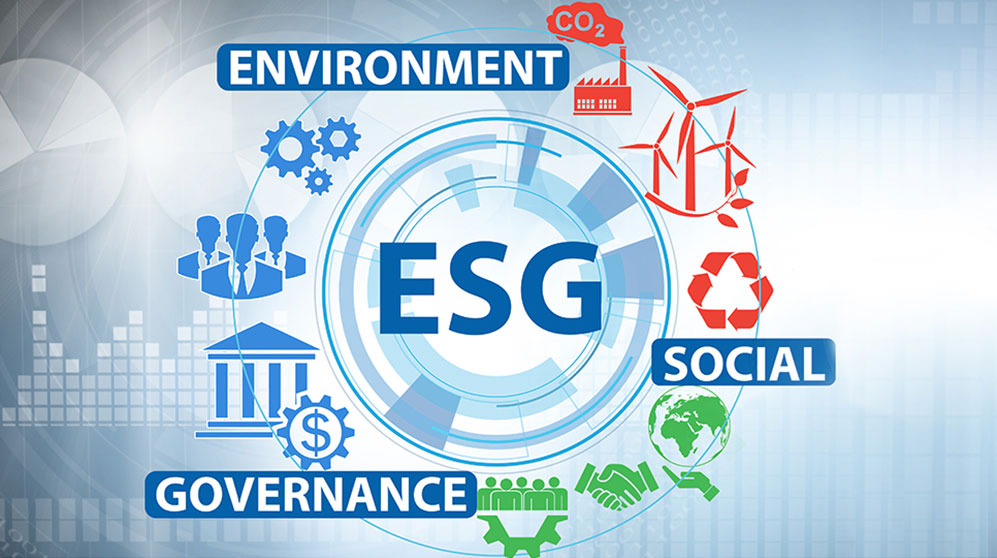ESG services
ESG : stands for Environmental Social and Governance
three key factors when measuring the sustainability and ethical impact of an investment in a business or company. Most socially responsible investors check companies out using ESG criteria to screen investments.
ESG is a framework that helps stakeholders understand how an organization is managing risks and opportunities related to environmental, social, and governance criteria (sometimes called ESG factors). ESG takes the holistic view that sustainability extends beyond just environmental issues.
our services
EGS plays a very vital role in overall effectiveness of the organization through their services. EGS provides different types of services and support in the field of EHS like Environment Social & Governance (ESG), Environment Sustainability Solutions, EHS Compliance Management, ESIA. We have highly qualified, experienced and subject specific experts.
GHG EMISSIONS ACCOUNTING: SCOPE 1, 2 AND 3.
Within this section we describe five steps used to calculate GHG emissions, from setting boundaries, identifying emissions sources, collecting data and calculating emissions. This section also includes an explanation of how emissions sources should be classified, across scopes 1, 2 and 3, and how screening is applied to determine the relevant and material scope 3 emissions categories.
Carbon accounting gets its name from carbon dioxide (CO2), the most common greenhouse gas and the biggest single contributor to global climate change. In most carbon accounting systems, emissions of all GHGs are measured by carbon dioxide equivalent, or CO2e.
There are two approaches to carbon accounting: spend-based and activity-based methods.
There are two approaches to carbon accounting: spend-based and activity-based methods.
• Spend-based methods of carbon accounting take the financial value of a purchased good or service, and then multiply this by an “emission factor,” which estimates the volume of emissions produced per dollar. If a business buys computers, for example, it’s possible to look up the emission factor of computers, multiply this by the amount spent on them, and thereby estimate the emissions produced by the purchase.
• Activity-based methods of carbon accounting take a different approach, measuring how many units of a particular product a company has purchased. If a company buys computers, to take the same example, this method would take the number of units bought (rather than their value), and again multiply this by an emissions factor.
Scopes of Emissions
Carbon accounting attempts to account for all of the emissions produced by a particular company, not just those produced directly as a result of its operations. In most carbon accounting models, the emissions produced by a particular company are broken down into three types:
Scope 1 Emissions
These are also known as direct emissions, which include all the emissions produced as the direct result of the operation of a company. This can include emissions produced by manufacturing processes, electricity produced on-site by burning fossil fuels, and emissions produced by chemical processes.1
Scope 2 Emissions
Plenty of companies don’t produce Scope 1 emissions because they are not running manufacturing processes themselves. Scope 2 emissions are those produced as a result of the generation of electricity, steam, heating, and cooling.
Scope 3 Emissions
Often referred to as supply chain emissions, Scope 3 emissions are indirect greenhouse gas emissions that occur as a consequence of the activities of a company, but from sources not owned or controlled by it. This can include the emissions produced during the manufacturing of the goods that a company buys, for example.
CARBON FOOTPRINT
The carbon footprint (or greenhouse gas footprint) serves as an indicator to compare the total amount of greenhouse gases emitted from an activity, product, company or country. Carbon footprints are usually reported in tons of emissions (CO2-equivalent) per unit of comparison;
CARBON NEUTRALITY AND PAS 2060
Carbon neutrality means not adding new greenhouse gas (GHG) emissions to the atmosphere. Where emissions continue, they must be offset by absorbing an equivalent amount from the atmosphere, for example through carbon capture and reforestation that is supported by carbon credit schemes.
The PAS 2060 standard specifies a four-stage process to demonstrate carbon neutrality. This involves:
• Assessment of GHG emissions based on accurate measurement data
• Reduction of emissions through a target-driven carbon management plan
• Offsetting of excess emissions, often by purchasing carbon credits
• Documentation and verification through qualifying explanatory statements and public disclosure.
WATER NEUTRALITY / WATER POSITIVITY
Water neutrality accordingly means reducing an activity’s water footprint as much as reasonably possible while offsetting the negative externalities of the remaining water footprint Water Neutrality.
The concept of Net Positive promotes a holistic approach, placing core business activity at the heart of actions towards sustainable practice, and encourages recognition and prioritization of impacts related to business profitability, risk, and sustainability. In terms of water, it simply means to create more (>0) water than what is being used. Some ways to achieve this net positive value in households and businesses would be: optimizing consumption of water, recycling to the most efficient point and capturing water streams through rainwater harvesting, finding innovative ways to capture stormwater etc
LIFE CYCLE ASSESSMENT
Life cycle assessment or LCA (also known as life cycle analysis) is a methodology for assessing environmental impacts associated with all the stages of the life cycle of a commercial product, process, or service.
An LCA study involves a thorough inventory of the energy and materials that are required across the industry value chain of the product, process or service, and calculates the corresponding emissions to the environment



